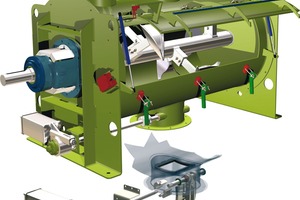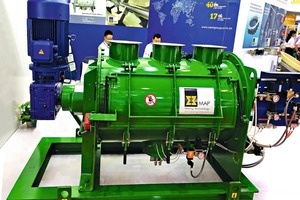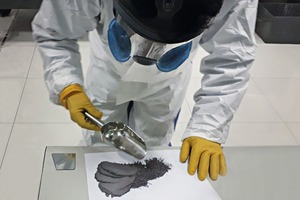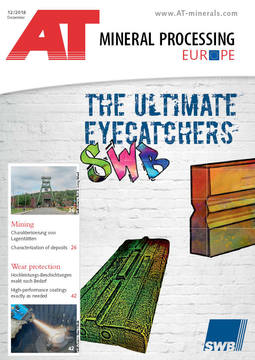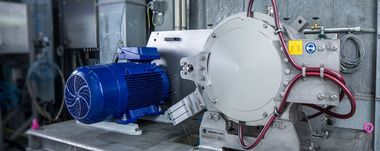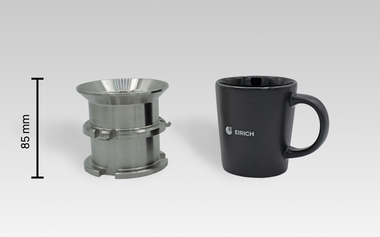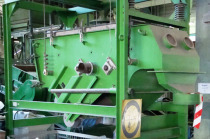Manufacturers of lithium-ion batteries rely on MAP mixing technology
The industry’s main target is mixing the product in a short time, with the lowest possible energy consumption. Moreover, impurities of the mixture need to be strictly avoided while the mixing machine should be highly resistant to abrasion and corrosion. MAP, a member of WAMGROUP, provides the answer with a mixer that has been specialised for this particular application.
A survey in 2012 showed that the use of a MAP mixer offers a number of advantages. Correct preparation of the cathode raw materials is the basis for high performance LIBs. In collaboration with a number of customers, MAP developed and industrialised a solution that offers high quality and optimal performance. The mixers are manufactured from stainless steel to avoid contamination from outside and inside the machine. MAP guarantees that all components made and used by the company are free of contaminants and 100 % approved by the secondary battery industry.
The interior of the mixing chamber is equipped with a special ceramic liner with specific material properties, dimensions, and thickness. The liner is applied with a special adhesive tried and tested under tough operating conditions. The special orientation of the lining tiles significantly reduces wear. In the standard version, the central shaft, the main mixing tools and choppers are provided with a special contaminant-free, abrasion-resistant ceramic spray coating. If required by the process, other lining and coating materials can be provided alternatively.
Secondary battery raw materials are particularly fine and toxic. For this reason, in designing the mixer, the engineers took great care to the avoidance of any leakage from the machine by providing special seals. The main shaft seals, in particular, excel through performance features that exceed those of traditional packing gland and standard mechanical shaft seals. The outlet valve is equipped with a special gasket and a control system enabling gradual opening of the outlet flap.
Customer reports have confirmed that MAP’s WBH Ploughshare Mixers achieve homogeneous mixtures of the cathode mass in a very short time thanks to the special design of tools and appropriate shaft speed. This is essential for a consistent, reproducible quality of such mixtures. MAP boasts a long-standing experience with a variety of raw material recipes in the secondary battery industry. All these recipes are essentially based on a mixture of lithium carbonate and a nickel-cobalt-manganese oxide mix with the addition of some additives. LCO, NCM, NCA, LMO and LFP are commonly mixed on MAP machines.Thanks to its many reference installations and its professionally equipped test laboratories, MAP is the ideal partner for plant engineers to further develop processing technology within the secondary battery industry. So far, several manufacturers of LIBs have already opted for MAP mixing technology. To this date, 250 mixers of this kind are up and running worldwide.
WAMGROUP’s worldwide network of state-of-the-art test laboratories include equipment and accessories, which enable the performance of mixing, as well as feeding and metering tests with a variety of bulk materials. The experimental arrangements provide maximum simulation of industrial processes. Test procedures follow the logic of real applications in genuine operating conditions.
MAP mixers in general are used for mixing, granulating, coating, kneading and dispersing in a variety of industries. They are available in volume sizes ranging from 6 l for laboratory applications up to 25 000 l for high capacity processes.
//www.wamgroup.com" target="_blank" >www.wamgroup.com:www.wamgroup.com

